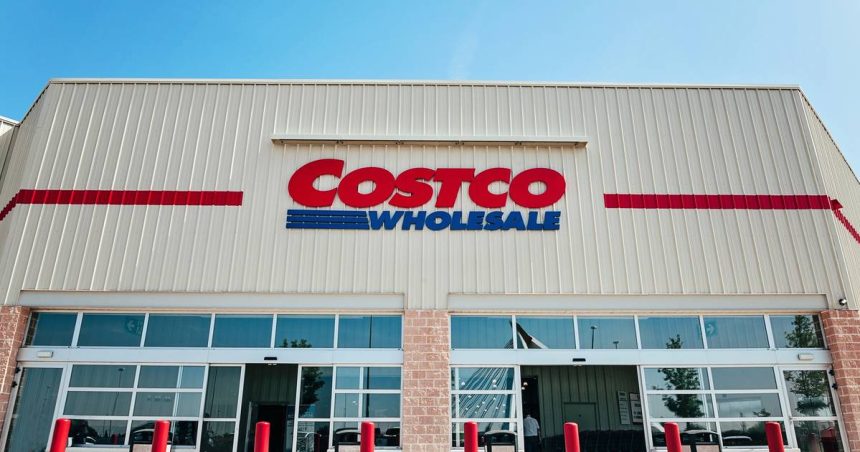Advertisers could soon be targeting hot-dog-combo enthusiasts who buy toilet paper by the truckload.
Costco is building out an ad network built on its trove of loyalty membership data, using its 74.5 million household members’ shopping habits and past purchases to power targeted advertising on and off its website.
The wholesale retailer is still testing such capabilities, and it’s fielding offers from potential ad-tech vendors, but the move signals that the third-largest retailer in the US could become a formidable player in the already deeply fragmented retail media space, which is estimated to reach $166 billion by 2025, and responsible for 20% of all digital media spend this year, according to eMarketer.
“Not only will we help you reach a Costco member, we will help you reach the right members in the right context based on past behavior,” Mark Williamson, AVP of retail media at Costco, told Marketing Brew.
Williamson, who previously held roles at Sam’s Club and Ahold Delhaize, joined Costco in September to fill a newly created retail media position, and is spearheading the push. The company is currently doing beta tests using its audience data to target users on other websites, he said, and it will eventually test targeting on its own site.
For example, a brand that sells baby products would likely prefer to advertise in front of customers who buy baby products, he said.
Because of the company’s membership cards, which are, unlike other major retailers, required to shop, Costco can tie individual purchases to shoppers’ households, both in-store and on Costco’s e-commerce site, Williamson said. This could theoretically help advertisers reach potential customers and tell advertisers whether customers saw an ad for the product before making a purchase.
Crowded aisle
Companies including Target, Walmart, Sam’s Club, Best Buy, and Kroger have all branched out into advertising to capitalize on customer shopping data, which has grown even more valuable as state-level privacy legislation, along with walled-garden tech platforms like Google and Apple, make ad targeting and measurement across platforms more challenging. Retailers aren’t the only ones getting in on the retail media frenzy: Uber, Marriott, and Chase have also all propped up their own ad networks.
Compared to other major retailers, Costco is late to the party. Back in 2021, Walmart announced an expansion of its advertising ambitions, partnering with The Trade Desk. Last year, its global advertising business, which includes its retail media network, generated $3.4 billion in revenue, per the company’s FY23 earnings report.
Meanwhile, Target’s retail media network, Roundel, contributed more than $1.5 billion in “value” for the company, Cara Sylvester, Target’s chief marketing and digital officer, told investors during the company’s most recent earnings call.
“It’s not incorrect to characterize Costco as behind the rest of the industry in retail media,” Williamson said, later adding that “when it became clear to the leadership team here that retail media isn’t just a profit center…When they determined that retail media revenue could directly drive increased value for our members, that’s when they said, ‘Okay, this is something we need to get involved with.’”
Get marketing news you’ll actually want to read
Marketing Brew informs marketing pros of the latest on brand strategy, social media, and ad tech via our weekday newsletter, virtual events, marketing conferences, and digital guides.
Generally, advertising is a comparatively high-margin business for retailers, since it costs relatively little to run ads on websites and since shoppers will visit retailers’ e-commerce sites whether there are ads or not. In Costco’s case, the profits from its ad business will be reinvested into keeping prices low for consumers, like offsetting shipping costs or keeping the chain’s lauded rotisserie chicken priced at $4.99, Williamson said.
Costco already has a nascent ads business, bringing in some advertising revenue through its Costco Connection magazine and “rudimentary” on-site contextual ads, Williamson said. Ad-tech company Criteo manages a portion of its website monetization, like sponsored search and product ads, he said.
But the company hasn’t until now made more aggressive moves into the ads space, which Williamson suggested could be due to its general aversion to advertising and marketing on major platforms like TV, which has “created a lack of expertise in the paid media space.” (And no, Costco is not sending Williamson to Cannes Lions this year.)
While he declined to give revenue estimates or expectations, he suggested that “it’s entirely possible to quadruple or more the size of our [media] revenue today, just by operating differently, by unlocking the power of the data that we have.”
“Great upside potential”
BMO Capital Markets estimates that the retailer made about $225 million in digital advertising revenue last year, which Kelly Bania, a BMO Capital Markets analyst, characterized as “really, really, really small compared to their size.” For reference, Kroger brought in about $910 million in the same time period, per BMO.
Mike Feldman, SVP and global head of retail media at VaynerMedia, said the retailer has a big opportunity.
“I believe they are leaving significant revenue on the table,” Feldman told Marketing Brew in an email. “When you layer on their loyalty-card penetration they have, Costco could build a significant competitive advantage in the marketplace.”
Costco execs seem to agree. During Costco’s earnings call last week, CEO Ron Vachris said the retailer has “ a significant program now with retail media, and we see some great upside potential.”
Some of that upside potential could come from Costco’s membership base, which presents immediate scale, even though the retailer doesn’t keep as many products on its shelves as other big-box stores. That could limit the number of advertisers that are likely to invest in the platform and represents the “biggest constraint to our business today,” Williamson said.
Costco isn’t yet pitching the offering to media agencies who are responsible for advertising budgets, but Williamson said the interest is already there.
“I’ve never had as much incoming demand from suppliers, brands, and agencies who have just been champing at the bit and have been so curious, like, ‘What’s taking Costco so long?” he said.
Read the full article here










